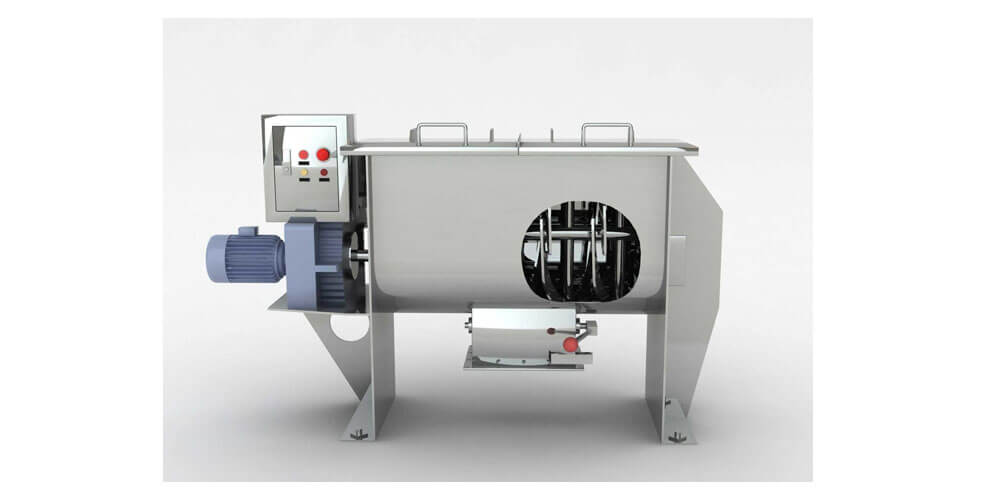A ribbon mixer comes in a U-shape trough with a double-helical agitator, and the shaft is usually positioned in the trough. Also, it comes with a welded spoke. The ribbons are also identified as spirals, and they have an inner and outer helical ribbon known as the double-helical ribbon. The gap situated in the ribbon’s edge coupled with space in the inner edge ranges depending on the current application.
1. Pharmaceuticals
Pharmaceuticals and their manufacturers use ribbon blenders to crush granules and mix dry powders and pellets. Note, some uses of these ribbons include mixing polymers and composite fillers. High-quality ribbon blenders can be used for mixing pastes and liquid components. They have tightly controlled clearances in the surfaces coupled with agitators. A ribbon blender should achieve some mixing in about 15 minutes for the ingredients with similar particle sizes.
That said, a horizontal ribbon mixer can mix with powders properly. Materials are often mixed to some level of accuracy. The blenders are ideal for preparing homogenous blends that come with minor components. Horizontal ribbon blenders are useful when it comes to manufacturing various facilities where the overhead space is limited. Horizontal blenders are also easy to charge and gentle in blending.
2. Baking
Scratch baking in several aspects is an art. Consumers rely on premixed brownie and cakes for baking. In-store bakeries also rely on premixes for batters as well as bread making. Wholesaler bakers will turn to these mixes since they are efficient. For complex products, including cakes and donuts with dozens of ingredients, premixes made of blender mixers come in handy. Besides, they can help in production schedules in the bakery industry for products that need unique ingredients and are made in low volumes.
3. Detergent making
A ribbon blender is useful in the detergent making. The machine is efficient and versatile, especially when it comes to mixing washing powder and dry granules. About two-thirds of the whole volume of the container of a ribbon blender is often filled to help make sure that there is a proper mixing. The blender provides the ideal result of dry powder coupled with granules because of their design and shape of the product container.
4. Pigment making
A horizontal ribbon mixer has a spiral ribbon coupled with driven parts. The outer ribbon is designed to push the material from both ends to the barrel of the machine while the inner one heads to the barrel’s center. That helps you to achieve convention. The cover is usually made into an opened door to help facilitate cleaning.
5. Capsule formulation and dry blending
People have some general idea of the design of a ribbon blender. However, describing it is not that easy. The objective of a device that mixes things, especially an electric machine, is to help form capsules. Introducing into the industry a qualified top-notch movement of the strength in these materials achieves a granule-like look in the long run.
Final Thoughts
Perfect for mixing dry and wet materials, a ribbon blender has a special mixing cycle marred with high to slow speed. It has excellent shearing action too. A normal application involves powder to powder mixing in addition to the manufacturing of pastes.

